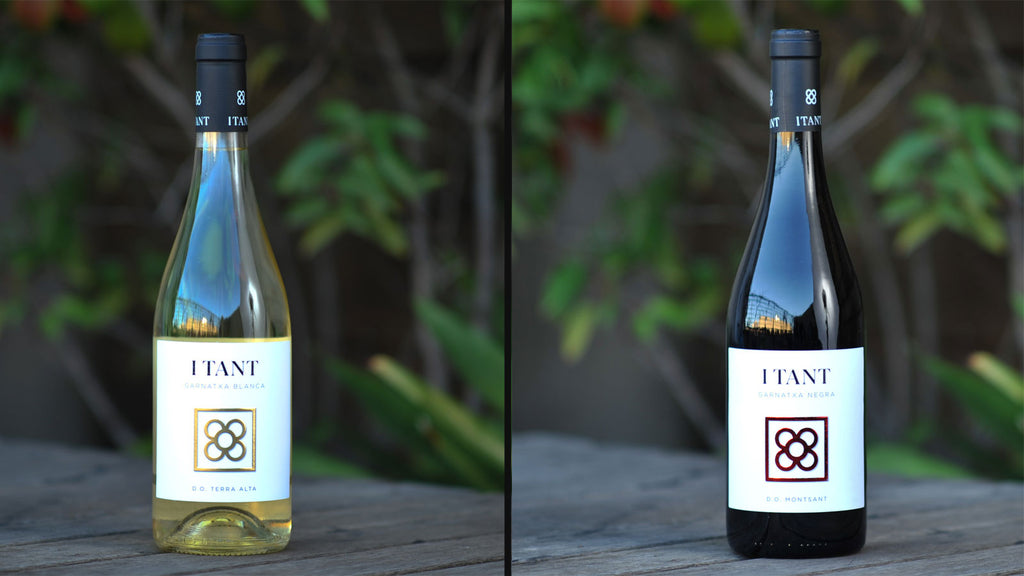This week the wine world has been celebrating another "grape day" - this time, International Grenache Day, which falls on the third Friday of September and pays a well-deserved tribute to one of the world’s most popular, but frequently overlooked, grapes.
Grenache, or Garnacha as we call it here in Spain, comes in a variety of different guises, from the "standard" red and white versions to Garnacha Tintorera, which is what the Spanish call the red-fleshed Alicante Bouschet variety, Garnacha Peluda or ¨hairy¨ Garnacha which is a mutation of red Garnacha, through to Garnacha Gris, a sort of pinker-skinned cousin of the white Garnacha grape which is quite popular in the south of France.
Red Garnacha, or Garnacha Tinta (often just referred to as Garnacha in Spain) is one of the most widely grown red grapes in the world and in Spain it ranks about third behind Tempranillo and Bobal. And for many wine lovers, the white version – Garnacha Blanca – tops the Mediterranean white grape charts; zingy acidity and bursting with rich flavours, it’s become the grape in DOs like Terra Alta in Catalunya.
Garnacha is a late ripening grape and it really likes hot dry conditions - it's not a big fan of the rain at all. And it's fairly wind and drought resistant. It's got a good root set that likes to dig down and find water in even the driest, stoniest ground. So out in vineyard it's quite a robust vine for wine makers.
But it can also be a bit tricky grape to work with. Because it's got such robust vines, mechanical harvesting is tricky so it’s usually picked by hand. It also has a tendency to oxidize if not treated carefully, so winemakers need to know what they’re doing in the winery to ensure the optimum amount of contact with oxygen to ensure flavours and aromas develop.
Historically Garnacha has often been used in blends. In Rioja it's been used a lot to give a little bit more body and fruit to the Tempranillo grape in rioja wines. And even in Priorat in southern Catalonia, which is probably one of the most famous Garnacha-producing regions in the wine world, they'll blend it with Carignan, Merlot, or even Cabernet Sauvignon to produce a fuller, more rounded red wine.
To a large extent, Garnacha’s success in Priorat blends brought it to the attention of some of Spain’s younger, more modern winemakers who started to see that Garnacha also had lots of potential when used on its own. So nowadays, you'll finding more and more producers in places like Aragon and Navarra in the north, or parts of central Spain particularly in the mountains to the west of Madrid, who are bottling some brilliant Garnacha wines.
So, what's it like to drink? Well, Garnacha can be quite chameleonic so its character can vary depending on where the grapes have been grown. It has medium tannins and acidity, but late ripening means it's still quite high in alcohol as the fruit has more time to develop the sugars which then become alcohol in the wine.
In terms of fruit, in younger wines you can expect a good dose of red fruit like strawberry and raspberry, sometimes with a slightly candied flavour. Wines made with fruit from older vines and that have been left to age for a little bit you’ll start to notice sweeter, deeper fruit flavours like figs, more herbal and savoury flavours and occasionally perhaps a lick of white pepper.
To help kick start your Garnacha journey, we’ve selected four brilliant wines you really should try.

Las Pilas by Luis Oliván
First up is Las Pilas, a really small production wine from Luis Oliván, one of Spain’s most exciting, up and coming new winemakers. Luis specialises in sniffing out and reviving historic vineyard plots, and Las Pilas hails from the little village of Bespén in DO Somontano. The wine has wonderful aromas of red fruit, blueberries, and scrub herbs against a background of subtle toasted notes from the time in the barrel. Fresh, light and mineral on the palate, with gentle tannins, bags of fruit and a long, lingering finish.

Verum Rosado Garnacha by Bodegas Verum
Next up is we’ve got a gorgeous, organic rosé from Bodegas Verum, one of our favourite family producers in Castilla-La Mancha. Verum’s chief winemaker, Elías López Montero is winning plaudits in Spain and internationally for his impressive line-up of terroir-driven wines, and Verum Rosado Garnacha doesn’t disappoint. Pale raspberry pink, it’s bursting with aromas of fresh strawberry and cherry and is ideal chilled on its own or paired with all kinds of spicy food.

Garnatxa Blanca and Garnatxa Negra by I Tant Vins
To finish off, we’ve got a delicious red and white Garnacha combo from southern Catalunya. I Tant Garnatxa Negra (Garnacha Tinta in Catalan, though in places like the Ampurdán you’ll also see it reffered to as Lledoner) is bursting with intense red fruit and a blast of Mediterranean herbs from DO Montsant, while its white stablemate I Tant Garnatxa Blanca is an elegant single varietal packed with stone fruit, floral aromas and a light citrus background. It’s a fresh, elegant and smooth and its unbeatable price makes it the perfect introduction to the white Garnachas of DO Terra Alta.

